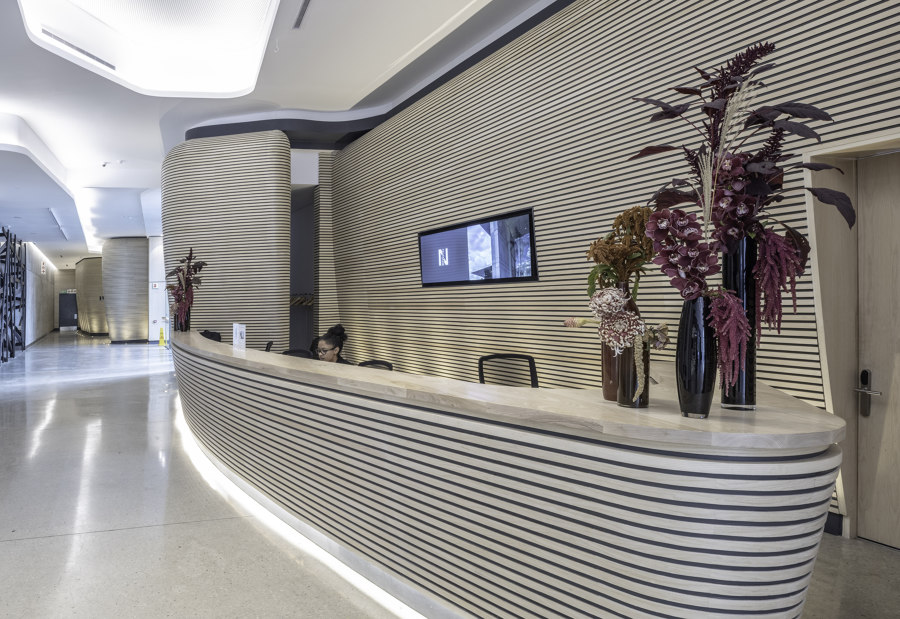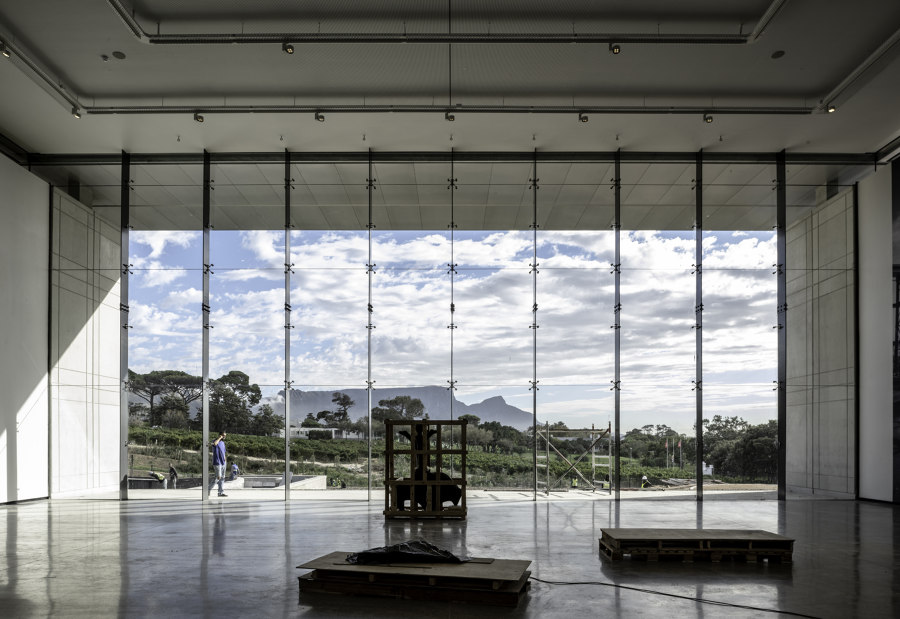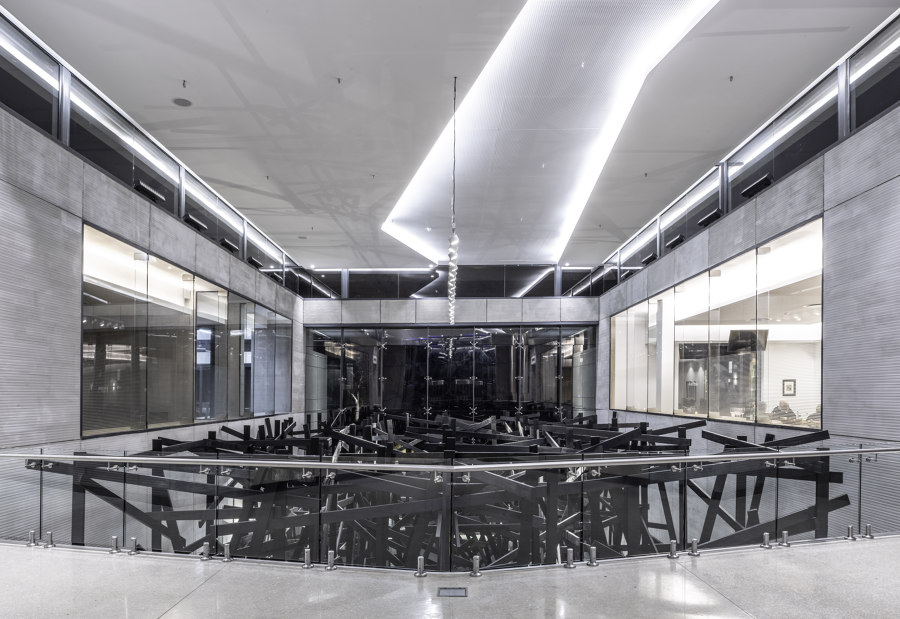Norval Foundation is a modern pavilion for art set against a dramatic mountain and vineyard landscape, located on the slopes of the Constantiaberg Mountain in Cape Town, South Africa. The Norval family who are the founders and initial funders of Norval Foundation envisioned a world-class art museum in an exceptional location that would be accessible to the general public. This provided a unique opportunity for architecture studio dhk; to strike a balance between two motivations: protect the artwork within and maximise views of the natural landscape outside.
The building’s architectural design is a pure expression of form; a bold rectangular mass, delineating its heavy-walled enclosure and light over-sailing roof. It is constrained by a linear site, between a busy road and an existing wetland; turning its back to a neighbouring embassy compound. The linear circulation spine is positioned along this edge, with the galleries and public spaces facing the natural landscape, capturing framed views of the wetland, vineyards and mountains beyond.
The building sits in an elevated position, and shields the wetland, creating a private space for the sculpture garden and forming an inhabited threshold between public and private zones. A triple-volume atrium establishes a deliberate visual connection between these zones; one urban, the other natural, and provides a physical transition between these contrasting environments.
Norval Foundation is experienced in a linear sequence. A curved wall that extends into the entrance court, draws visitors past the double-volume restaurant, gallery shop and into the generous reception which calmly directs guests to the central atrium that introduces the main galleries. A terrace along the length of the building incorporates a timber deck serving the restaurant and connects to walkways on either side that lead to the sculpture garden. The grounds also include an amphitheatre, children’s playground, and picnic area.
The galleries comprise a large environmentally-controlled special exhibitions space, and a series of eight gallery spaces, culminating in a dramatic triple-volume sculpture gallery, a dramatic setting for large-scale pieces with Table Mountain as a backdrop. All the galleries are column free, allowing maximum flexibility for display of all forms of art and they can be treated as separate experiences or a sequential journey as required.
The very specific technical requirements for the gallery spaces in terms of environment control take into account careful control of light, temperature and humidity, acoustics, and fire prevention. To create the minimal spaces required for the display of art, all services are concealed in the wall and ceiling cavities to create a seamless appearance.
The programme further dictates the building form, which is split vertically between the ground floor galleries and public spaces, and the first floor where the more private spaces are found; offices, library, bar, a further gallery space and artist’s residence. Art storage vaults are positioned below ground level, with the highest level of security as well as state of the art temperature and humidity control.
The selected materials palette is raw and honest, comprising primarily precast concrete, natural timber, granite and glass, contrasting the natural landscape. Clerestory windows allow the roof to float above the heavy walls, like the lid of a box concealing treasures within and allowing soft indirect natural light to penetrate the interior spaces.
The primary internal and external finish is a combination of polished concrete, smooth class one precast concrete panels and textured precast concrete panels. The precast panels went through a rigorous design process of testing and sampling to achieve the desired finish. A Teflon mould was developed to create a horizontal textured pattern on the precast panels, and should the panels become damaged, the mould can be used as a repair tool for any future maintenance. Externally, the precast concrete is finished with a chamfered tartan grid, which draws the eye upwards and lengthways, emphasising the scale of the building. Internally, timber panelling brings warmth to the spaces.
The site incorporates an incredibly sensitive existing wetland ecosystem that had been historically neglected. The wetland was completely rehabilitated, with alien species removed and its surrounding buffer zones revived and replanted with locally indigenous fynbos, enhanced by other indigenous plants and naturalised species - attracting a multitude of insects and birds onto the site. The wetland is also one of the last known breeding sites of the Western Leopard Toad, an endangered species. In order to allow the toads’ safe passage, concrete culverts were constructed underneath the road, and the embankments and earth ramps were carefully designed to allow the toads to move easily across the site.
Design Team:
dhk
Structural Engineers, Mechanical Engineers + Civil Engineers: Ekcon Engineering
Electrical Engineers: Converge Consulting
Electronic Engineers: Delportdupreez
Environmental: Ecosense
Freshwater Ecologists: Freshwater Consulting
Town Planners: Planning Partners
Landscaping: Keith Kirsten Horticulture International (KKHI)
Quantity Surveyor: Norval Wentzel Steinberg
Main Contractor: WBHO
Fire Consultant: Ekcon Engineering
Lighting Consultant: Pamboukian Lightdesign
Acoustic Consultant: Subsonic Designs
Land Surveyor: Tony Vroom
Interior Designer: Reddeco (Restaurant and Bar); SpaceLIFT & Black Canvas (Gallery Shop)



































